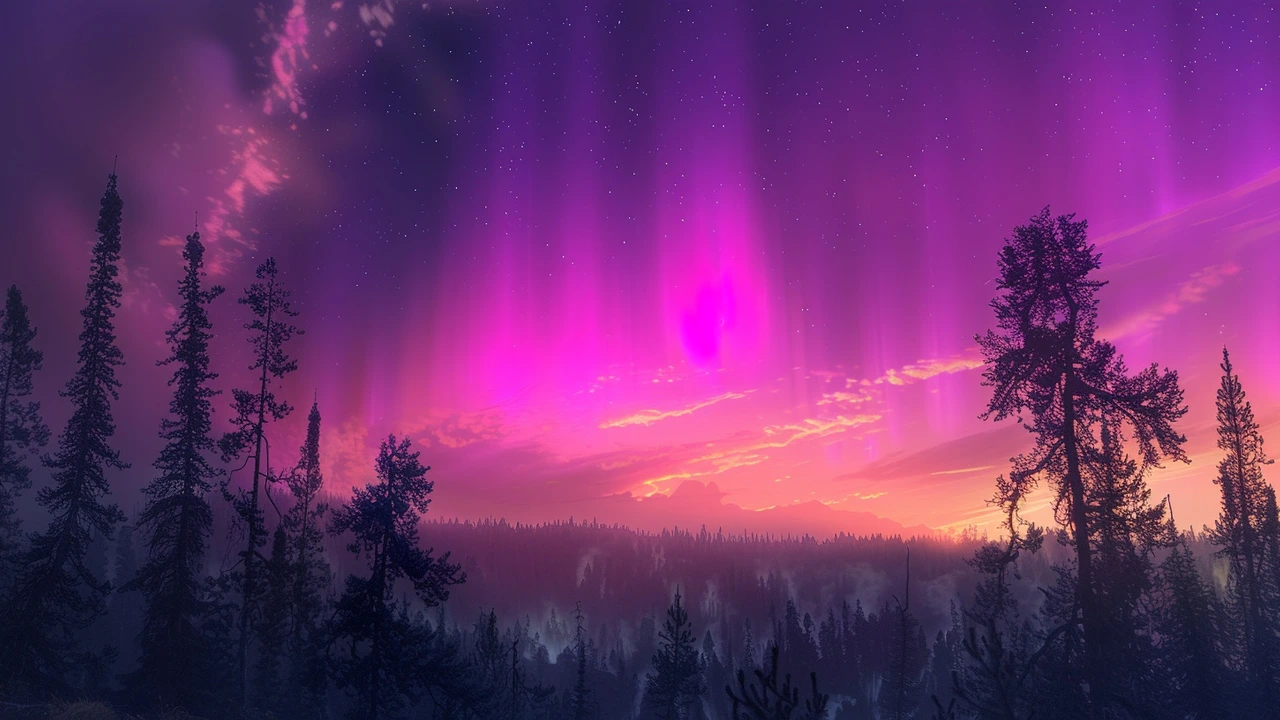An unexpected and powerful solar outburst last Friday afternoon initiated a severe geomagnetic storm, casting the normally elusive Northern Lights or Aurora Borealis across skies far beyond their typical polar reaches. This remarkable event offered a rare spectacle to residents of countries as varied as the UK, the United States, China, New Zealand, and Australia. The vivid displays of celestial colors arched across night skies, turning a regular weekend into a global observatory session.
Understanding the Impact of Solar Activity
The root cause of these extraordinary light displays is tied directly to solar activity, specifically sunspots and solar flares. A particularly large sunspot, 16 times the diameter of Earth, has been reported to be active. This sunspot has already contributed to multiple strong solar flares and consequent plasma eruptions from the sun's outer atmosphere since last Wednesday. Such intense solar activity is part of the sun's 11-year activity cycle, which is currently ramping up towards its peak.
Advisories and Warnings Issued
The severity of this storm prompted the US National Oceanic and Atmospheric Administration (NOAA) to issue a Severe Geomagnetic Storm Warning. This advisory was not just a routine alert but a critical notice to various key sectors. Operators of power plants and spacecraft in orbit, alongside agencies like the Federal Emergency Management Agency (FEMA), were advised to take preventative measures to shield against potential detrimental effects. These include risks to high-voltage transmission lines in power grids, which are vulnerable to geomagnetic-induced currents that can cause extensive operational failures.
Additionally, the increased solar particles entering the Earth's atmosphere could potentially disrupt satellite operations. These disturbances pose significant threats to navigation and communication services that rely on satellite signals, such as GPS. However, the presence of numerous navigation satellites orbiting the Earth helps minimize the risk of prolonged service outages.
Challenges to Space Exploration and Satellite Operations
The current geomagnetic storm raises concerns beyond mere technological inconveniences. NASA has expressed worries about the increased radiation levels that pose a direct threat to the safety of the astronauts aboard the International Space Station (ISS) and the integrity of science satellites designed to gather crucial space data. The level of radiation is significantly heightened during such solar events, putting delicate satellite instruments and onboard astronauts at risk.
Despite these challenges, no direct action from the general public has been deemed necessary by NOAA. The primary precautions are oriented towards technical adjustments and protective measures in sectors directly affected by such space weather events.
The Science Behind the Spectacle
To understand the science of these auroras, it’s important to note that they are caused by interactions between Earth's magnetic field and charged particles from the sun. These particles collide with atoms in Earth's atmosphere, releasing energy in the form of light. While typically seen in polar regions where the magnetic field is strongest, significant solar events like the recent one can push these lights to lower latitudes, offering a stunning visual treat to those unaccustomed to such displays.
This recent geomagnetic storm serves as a powerful reminder of our planet's susceptibility to the vast forces of our nearest star. It underscores the importance of continued monitoring and research into solar activity, which can have profound effects not only on our planet's natural phenomena but also on its technological infrastructure.

Comments